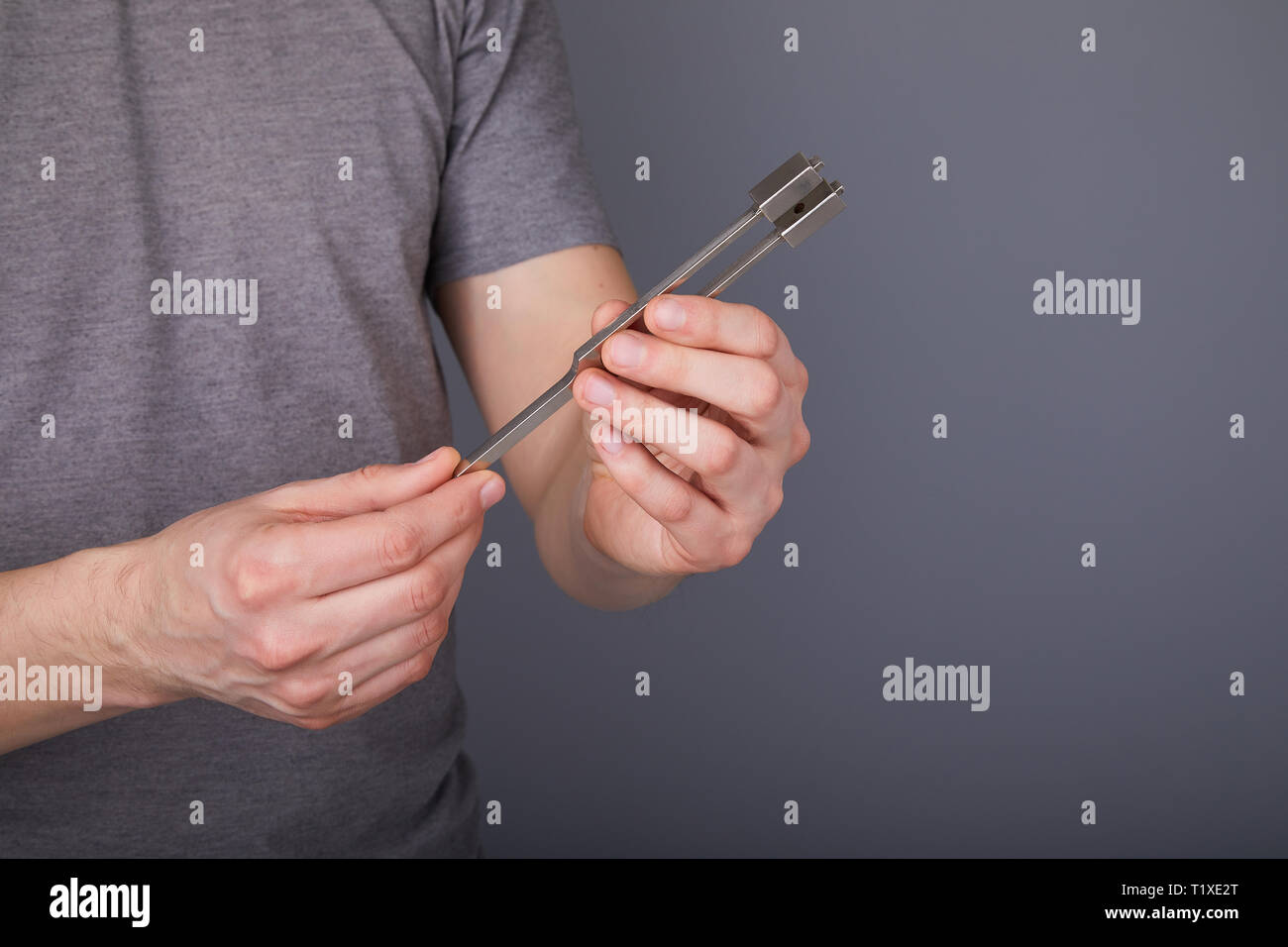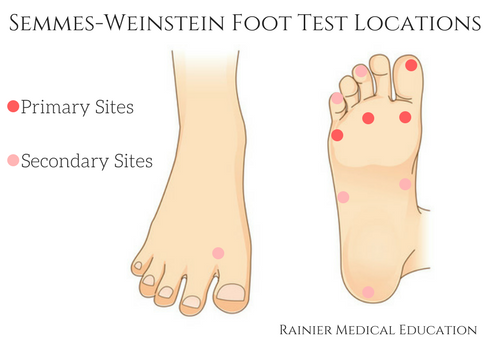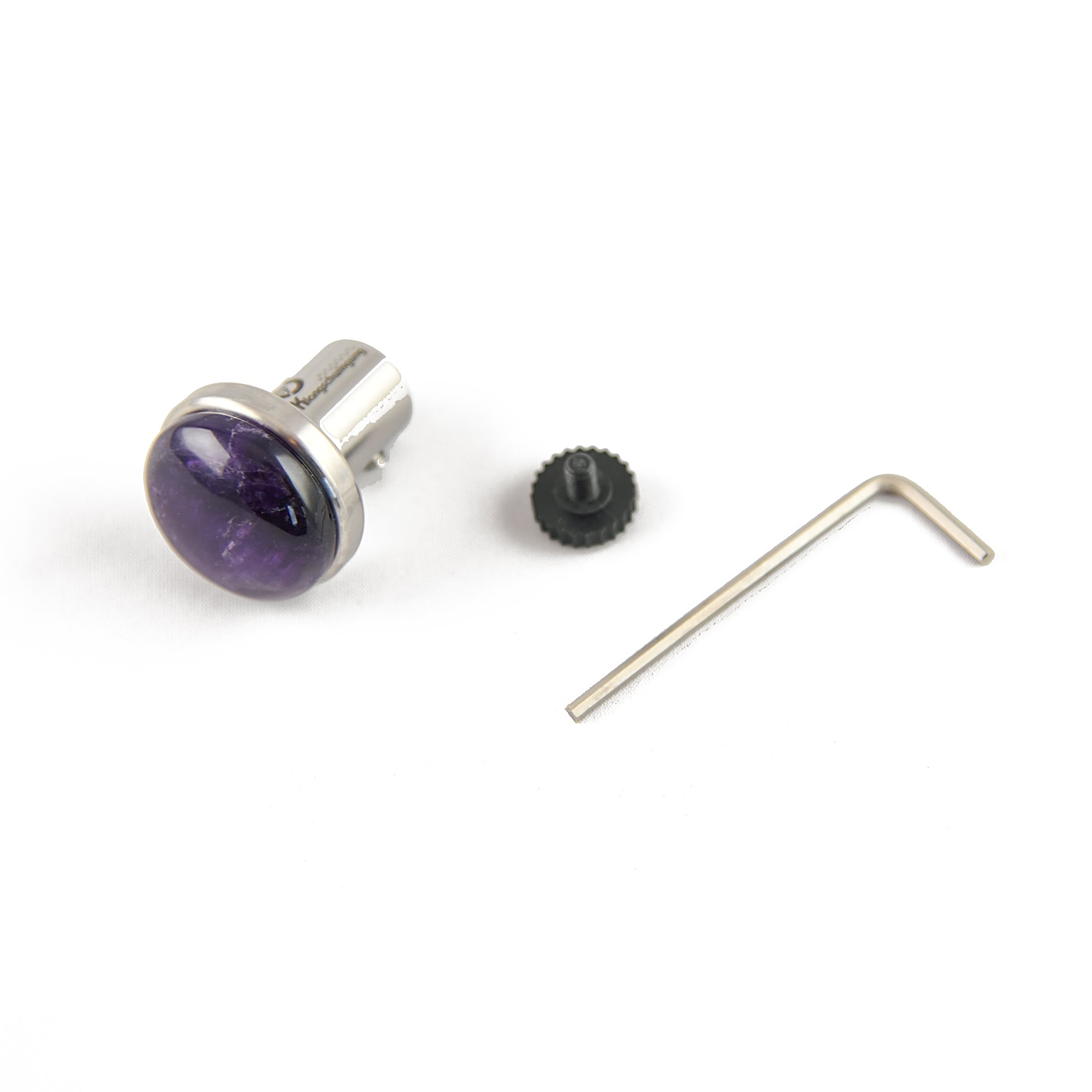

- Tuning fork test foot how to#
- Tuning fork test foot full#
Hold the tuning fork in one hand and place the base against the patient’s mastoid process ( see video).Begin by striking the tuning fork against your knee or elbow.

I want you to tell me which position you hear the tuning fork loudest in”
“I’m going to put this vibrating tuning fork in two positions, one touching the bone near you ear, one a short distance from the ear. Rinne’s test can only detect a conductive hearing loss of at least 30dB. Rinne’s test has a high sensitivity (0.84) though this varies with the skill of the examiner. This test aims compare air conduction with bone conduction. Interpretation of Rinne’s and Weber’s tests Test The various outcomes of Rinne and Weber tests are shown below. In bilateral and symmetrical hearing loss of either type Weber’s test will be normal. If a patient has a unilateral sensorineural hearing loss, the tuning fork sound will be heard louder in the normal ear. If a patient has a unilateral conductive hearing loss, the tuning fork sound will be heard louder in the deaf ear. move to one side, with a relatively small amount of hearing loss (5dB) If the patient is unclear, you may ask if they hear it “everywhere.” Be careful not to ask the question in a leading manner. Then ask the patient: “Do you hear the sound louder in one ear than the other?”. It is important to steady the patient’s head with your other hand so that reasonably firm pressure can be applied. To perform Weber’s test strike the fork against your knee or elbow, then place the base of the fork in the midline, high on the patient’s forehead. Note you should ideally be in a completely silent room for Rinne and Weber tests. Permission (consent and explain examination: “I’m going to examine your hearing using this tuning fork now, is that OK?”). Identity of patient (confirm name and date of birth). Video on Rinne and Weber tests by Oxford Medical Education Other tuning fork tests include the Schwabach and Bing tests, though these are not used in routine practice. The Rinne and Weber tests help distinguish between a conductive hearing loss (CHL) and sensorineural Hearing Loss (SHL). These tests should be carried out with a full examination of the cranial nerves or the ear. Patients with bilateral loss or mixed losses are better assessed with formal pure tone audiometry. They are most useful in patients with unilateral hearing loss which is purely conductive or purely sensorineural. The tuning fork tests provide a reliable clinical method for assessing hearing loss. How to do Rinne and Weber tuning fork tests for doctors, medical student finals, OSCEs and MRCP PACES © 2023 All Rights Reserved.Tuning Fork Tests (Rinne’s and Weber’s tests) Boyko EJ, Ahroni JH, Cohen V, Nelson KM, Heagerty PJ: Prediction of diabetic foot ulcer occurrence using commonly available clinical information: the Seattle Diabetic Foot Study.Mayfield JA, Sugarman JR: The use of the Semmes-Weinstein monofilament and other threshold tests for preventing foot ulceration and amputation in persons with diabetes.Tendon Hammers can test reflexes Diabetic Neuropathy Device™ The handheld digital device detects and measures peripheral neuropathy and identifies the risks for complications in a three-minute comprehensive foot exam. The tuning forks provide a test of vibratory sensation. Screening for sensory loss with the 10-g monofilament is in widespread use across the world, and its efficacy in this regard has been confirmed in a number of trials, including the recent Seattle Diabetic Foot Study 2.

Monofilaments, sometimes known as Semmes-Weinstein monofilaments, were originally used to diagnose sensory loss in leprosy 1. Speech, Language, Cognition, and SwallowingĪccurate results, early detection, improved patient outcomes Monofilaments.

Clinic & Hospital Supplies, Equipment, Furnishings.








 0 kommentar(er)
0 kommentar(er)
